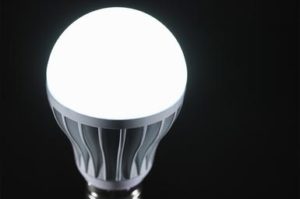Source: environment.about.com
Published: January 12, 2017

Rafe Swan/Cultura/Getty Images
By Larry West
Perhaps the ultimate “alternative to the alternative,” the LED (light-emitting diode) is well on its way to dethrone the compact fluorescent light (CFL) as king of the green lighting choices. Little remain of the early challenges to acceptance: most notably, brightness and color choices are now quite satisfactory. Affordability remains a challenge but has greatly improved. Here’s a review of the little semiconductor device transforming our indoors and outdoors environments.
LED Advantages
LEDs have been used widely for decades in other applications—forming the numbers on digital clocks, lighting up watches and cell phones and, when used in clusters, illuminating traffic lights and forming the images on large outdoor television screens. Until recently, LED lighting has been impractical for most other everyday applications because it is built around costly semiconductor technology. But along with some breakthrough technological advancements, the price of semiconductor materials has dropped in recent years, opening the door for some exciting changes in energy-efficient, green-friendly lighting options.
- A lot less energy is needed to power LED lights than comparable incandescent and even CFL lights. According to the U.S. Department of Energy, a 15w LED light uses 75 to 80% less energy than the similarly bright 60w incandescent. The agency predicts that by 2027, the widespread use of LED will generate annual savings of $30 billion, based on current electricity prices.
- LED bulbs are lit solely by the movement of electrons. Since LED lights don’t fail the same way as incandescent bulbs or CFLs, their lifespan is defined differently. LEDs are said to reach the end of their useful lifetime when their brightness has decreased by 30%. This lifetime can exceed 10,000 hours of operation, even more if both the light and the appliance are well designed. Proponents say LEDs can last some 60 times longer than incandescents and 10 times longer than CFLs.
- Unlike CFLs, they contain no mercury or other toxic substances. Mercury in CFLs is a concern during the manufacturing process, both in terms of pollution and exposure to workers. At home, breakage is worrisome, and disposal can be complicated.
- LEDs are solid-state technology, which makes them more resistant to shocks than either incandescent bulbs or CFLs. It makes their application welcome on vehicles and other machinery.
- Unlike incandescent bulbs, which generate a lot of waste heat, LEDs don’t get especially hot and use a much higher percentage of electricity for directly generating light.
- LED light is directional, allowing users to easily focus the light beam on desired areas. This eliminates most of the reflectors and mirrors needed in many incandescent and CFL applications, like ceiling projectors, desk lamps, flashlights, and car headlights.
- Finally, LEDs are quick to turn on, and there are now dimmable models.
Disadvantages of LED Lights
- The price of LED lights for home lighting purposes has not dropped yet to the level of incandescent or CFL lights. LEDs are steadily becoming more affordable, though.
- Although they are not affected by low temperatures or moisture, LED use in freezing environments can be problematic for some outdoor applications. Since the surface of an LED does not generate much heat (the heat produced is evacuated at the base of the lamp), it will not melt accumulating ice or snow, which can be a problem for street lighting or vehicle headlamps.
Edited by Frederic Beaudry.
